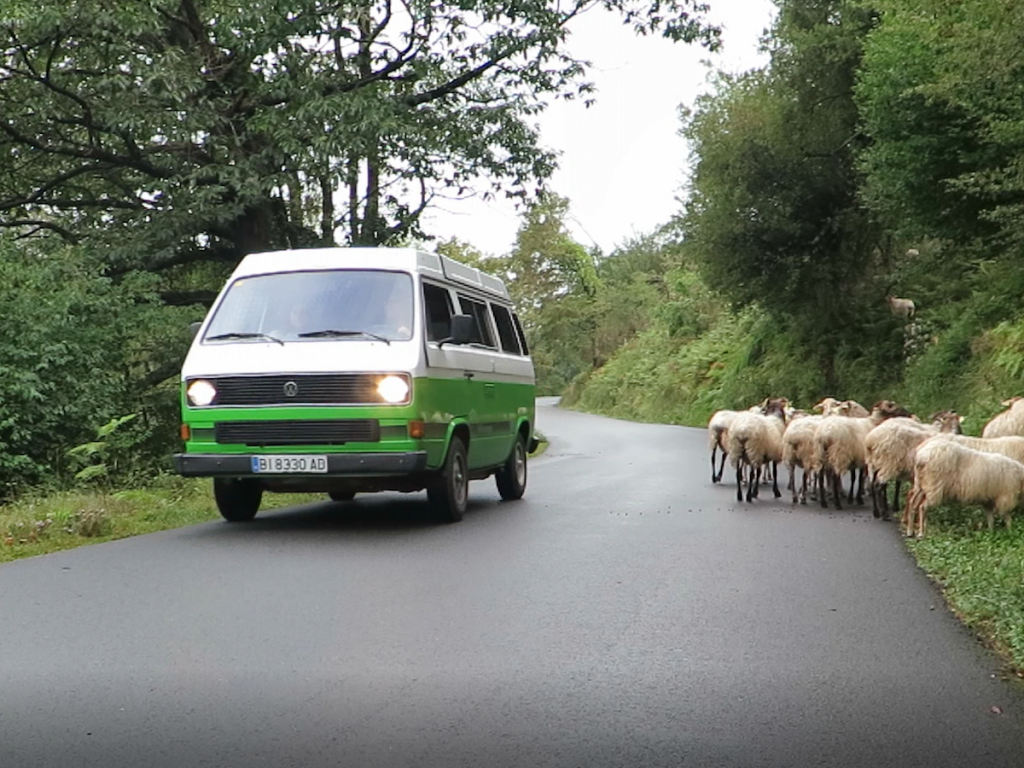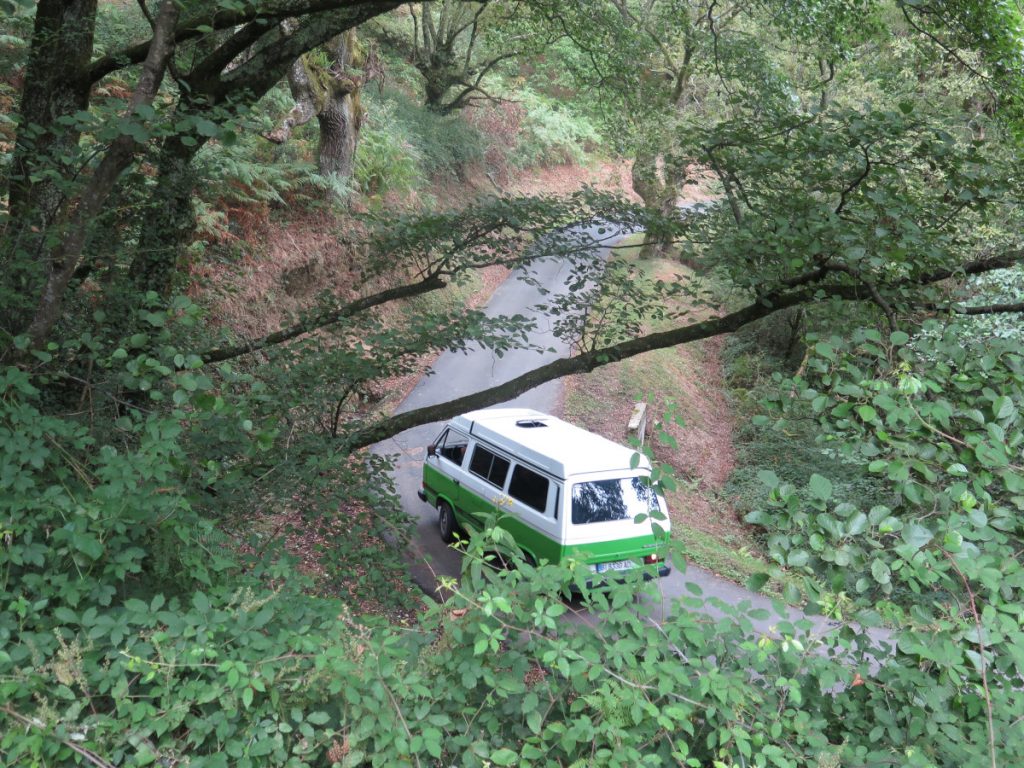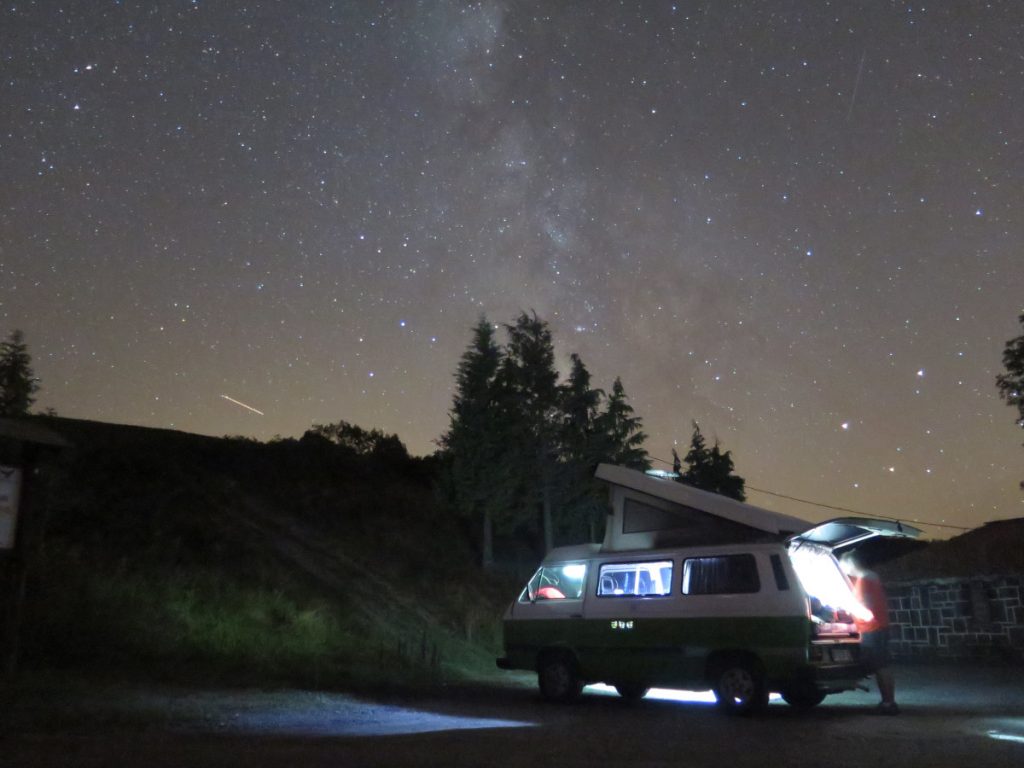The Pyrenees in motorhome and camper van

In 2016 we travelled through part of the Pyrenees in an old VW van from the 80s, three friends, getting to know the experiences of the people who live in these mountains. It was the trip "Territories by People"a great discovery, for proof here the Instagram of the trip. The old white and green VW was driving along the winding road on the Col d'Ibardin. All green, pure wilderness, dotted with farmhouses, meadows with latxa sheep. And a whole lot of days for freedom. The freedom of travelling on four wheels with the house on top of you. Now it is a Transit euroline that takes us on an adventure. They say that every van, every motorhome, is a reflection of its owners, and when I look at it, it tells me that it wants to see the world.
If there is one thing I realised on this trip, it was how fascinating the mountain range, the Pyrenees, is: 430 km long, linking two seas - the Bay of Biscay and the Mediterranean. A trip in a motorhome or van through the Pyrenees will take you to discover a varied, rich landscapeFrom the green of a humanised landscape of meadows and farmhouses, to the harshness of rocky mountains and great canyons, to the snow on the heights, but also to Mediterranean landscapes, where vines grow between farmhouses. Yes, this is the Pyrenees, and you are already taking your van or campervan into the heart of it.

As I know that by now you are impatient for us to get down to business, I am going to try to be practical first and foremost, in the following paragraphs we are going to talk about where we can stop or stay overnightI will propose 4 routes And we will talk a bit about some resources to make the trip easier. Ah! Don't forget the code of the responsible camper or van driver, who has to accompany us. You can click on the links to go to the different sections. I am also going to leave here some buttons so that you can jump to the routes that I propose.
Where can we locate ourselves, stop, park, spend the night?
A bit of regulation
Let's start by being aware of the difference between staying overnight and camping. So that we understand each other, we spend the night if we only park. Free camping is forbidden as a general rule in Spain. The moment you put up a roof, open an overhanging window, take out an awning, lower the legs, put up a wedge, set up a table and chairs, at that moment you are camping. As long as parking is allowed, and the length of your set-up allows it, there is no problem to stay overnight. As long as the vehicle is correctly parked, respecting the road markings and the time limitation, it is not relevant that the occupants are inside. The only limitation is the prohibition to deploy elements that overflow the perimeter of the motorhome or van.
If it is true that you you can find municipalities that explicitly prohibit the parking of caravans and AC's by municipal ordinance. Also for vans. Height barriers and signs are common. And sanctions are also common. It may be that they don't respect the General Traffic Regulations, but it's up to each individual to go around appealing fines. I am one of those who, if I see a sign, I avoid the problems by going somewhere else.

What about wilderness areas? In the Pyrenees there are countless Parks, which protect the territory and control the travellers who come to enjoy them. Each park has its own regulations that must be respected in order to avoid unpleasant surprises. As a general rule, it is forbidden to spend the night in the Pyrenean Parks and natural areas.. Let's go with this premise when we think of spending the night in their domains.
Needless to say, there are penalties for those who leave waste on the boundaries of parks - or outside them - protected areas, which represent an important environmental attraction. All waste must be properly emptied in designated places. But let us no longer do it for the sake of sanctions but for the sake of environmental respect.

25 PHOTO SPOTS in the Pyrenees 📸
Access to map Google Maps 📌with the most emblematic locations in the Pyrenees mountain range.
And then... where can I spend the night
First of all, I am going to recommend you the app Park4nightwhich for me right now I would consider indispensable. Places to spend the night and tactical stops to rest during the day, fully updated. It has a great community that creates places and keeps them updated. The comments are invaluable. For travelling around Europe it is a great ally. Also interesting is the map of places of Furgoperfecto.
You will be able to find from car parks, roadside sites, to service areas and parking areas designed to accommodate motorhomes and vans. In this way you may feel more confident and comfortable. In addition, we offer services such as drinking water supply and tank emptying sites -one of the tasks to be carried out every few days. What to say that the camping will be ready to welcome the camper tourist with open arms. And a good shower, every now and then, doesn't hurt.

Routes
The green Pyrenees, travelling through the Atlantic Pyrenees.
In the heart of the Pyrenees, through the realm of the three-thousanders.
Eastern Pyrenees, Catalan and Andorra.
Trans-Pyrenees. From the Cantabrian to the Mediterranean.
Follow the code of the responsible motorhomer or campervan driver
First of all, it is important to bear in mind that when travelling by motorhome you will not be the only one to do so - as is obvious -, so you have to follow an implicit code for your own well-being and that of others. To enjoy our motorhome, we must be respectful of those around us. Driving responsibly is the main thing, and respecting the environment we enjoy is the main thing too.
This includes that when parking, parking should be done discreetly, and ask before parking if the place is available. It is also necessary to take care of the parking place and to empty the tanks properly -there are points and places for this purpose, which should be consulted.
Creating a cordial relationship with other travellers will help to make the experience more pleasant, so do not obstruct the overall view of the site - the landscape - and engage in dialogue whenever possible with like-minded travellers and locals alike.
Fastpacking is not about going faster. It's about going lighter.
If you come from classic trekking, this is the next step: learning to move with less weight,
more fluid and enjoying every kilometre more.
Join the channel and start discovering what lightness feels like.
